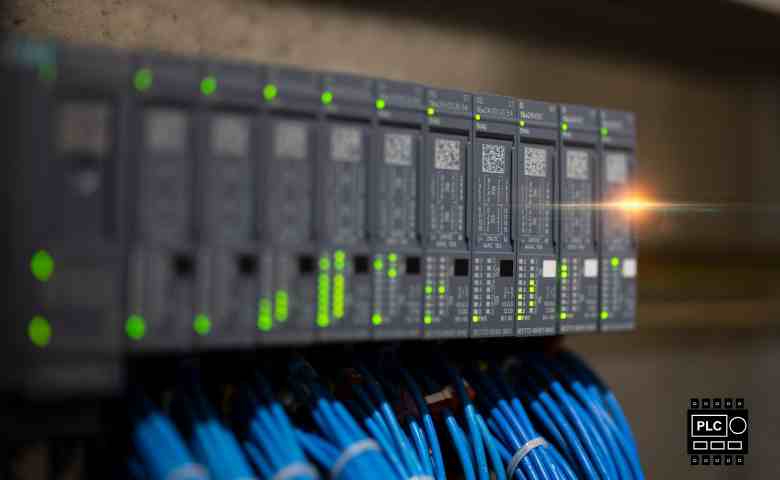Last Updated on September 20, 2025 by Admin
Programmable Logic Controllers (PLCs) serve as the backbone of modern industrial control systems. Whether on a production line, water treatment plant, or energy grid, they’re expected to operate with precision and minimal downtime. Yet even the most reliable systems require regular attention. Preventive and corrective maintenance help extend hardware life, reduce unplanned outages, and protect critical operations.
For manufacturers and facility managers, working with a trusted PLC company can simplify this process. Expert support ensures that systems are checked thoroughly, updates are done correctly, and risks are addressed before they lead to failure. But even internal teams can take proactive steps to keep their PLC systems running at peak performance. Here’s what matters most during PLC maintenance.
Table of Contents
Inspect and Clean All Hardware Components
Dust, moisture, and heat can degrade PLC hardware over time. While PLCs are built to withstand industrial environments, they’re not immune to physical wear. That’s why visual inspections and routine cleaning should be part of any scheduled maintenance.
Start by powering down the unit and checking the enclosure. Look for signs of corrosion, burnt areas, or insect intrusion. Loose terminals, damaged cables, or worn insulation can cause erratic behavior or total failure. Tighten all wiring connections and ensure proper grounding is intact.
Dust buildup inside control cabinets can lead to overheating. Use anti-static brushes or compressed air to gently clean circuit boards and fans. Avoid cleaning chemicals unless they’re designed for electrical equipment. Document anything unusual. A small crack or warped component might be an early sign of deeper problems.
Verify Program Integrity and Backup Files
Logic errors don’t always show up right away. Over time, programming changes, memory corruption, or power failures can compromise PLC behavior. That’s why every maintenance cycle should include verification of the control logic and memory state.
Load the original source code into the programming software and compare it with the current version running in the PLC. Most software platforms include a compare or diff feature that highlights any discrepancies. If there have been changes, confirm that they were authorized and documented.
Equally important is backing up both the program and PLC configuration. Save copies to an external device and a secured cloud directory. Store backups using naming conventions that include version numbers and dates. In the event of a failure, you’ll avoid hours of downtime by having a tested recovery plan in place.
Test Input/Output Signals and Devices
A PLC is only as reliable as its I/O layer. Faulty sensors, loose wiring, or malfunctioning actuators can cause major disruptions. During maintenance, test each digital and analog input for signal integrity and response time.
Use a multimeter or simulator to validate inputs from pressure switches, photoeyes, or temperature sensors. Check for noise, voltage drops, or unexpected fluctuations. Then move on to the outputs. Manually activate relays, solenoids, and motors to confirm they function as expected.
Also check for signal drift in analog devices. A sensor might show a valid reading, but if it’s 10% off due to calibration drift, it can affect process accuracy. Calibrate field devices as part of the PLC maintenance routine. This ensures that the system reacts to real-world conditions precisely and consistently.
Update Firmware and Security Settings
Just like any connected device, PLCs can be vulnerable to cyber threats. Older firmware may contain security gaps or bugs that affect performance. Keeping firmware up to date is critical to system reliability and protection.
Before updating, consult the manufacturer’s documentation and test any changes in a non-production environment. Not all updates are compatible with every module or system configuration.
Security settings also deserve review. Change default passwords, enable encryption where available, and isolate PLC networks from external systems using firewalls or VLANs. Disable any unused ports or features to reduce the attack surface. Security and maintenance go hand in hand in today’s connected environments.
Review Logs, Alarms, and System Diagnostics
Most PLCs generate internal logs that provide insights into errors, warnings, and performance trends. These logs are often overlooked but can reveal developing issues before they become critical.
Check for recurring faults or communication drops. A sensor that fails once a month might be ignored, but over time it could indicate a wiring issue or failing device. Review scan times, cycle counts, and memory usage trends. If scan time has increased significantly, investigate for bloated logic or hardware strain.
Alarms should be acknowledged and analyzed, not just cleared. Document the context of any alarms that occurred since the last maintenance cycle. This creates a trail that can help root cause analysis in future events. Diagnostic data, combined with human observation, can prevent small issues from escalating.
Related Posts:
- Heavy Equipment Maintenance Software Guide 2025
- What to Know Before Buying a Log Home and Maintenance Tips
- Expert Aerial Installation & Repair Guide: Tips and Tricks
- 4 Maintenance Essentials for Prolonging the Life of Commercial Interiors


